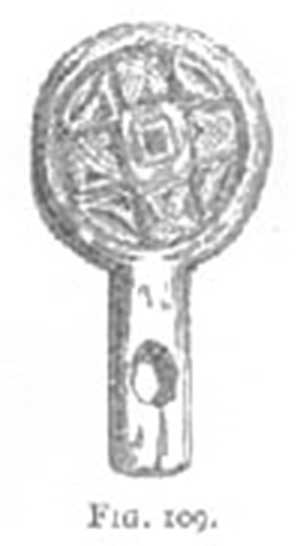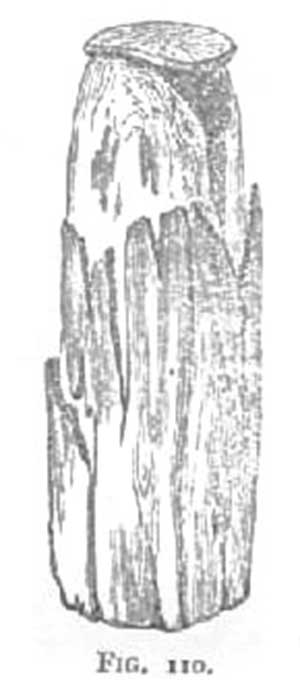Milk and Its Products
From A Smaller Social History of Ancient Ireland 1906
« previous page | contents | start of chapter | next page »
CHAPTER XVII....continued
5. Milk and its products.
There are several ancient Irish words for milk, three of which are ass, loim, and melg: this last evidently cognate with Latin mulgeo and with English milk. The most general word in modern use is bainne [bon-ya], which is also an ancient word. The milk chiefly used in ancient Ireland was that of cows; but goats' and sheep's milk was also in much request. Milk was used in a variety of ways, as at the present day. For drinking, the choice condition was as new milk (lemnacht or lemlacht): and cream was sometimes added as a luxury. But skimmed milk, i.e. milk slightly sour, and commonly thick, from which the cream had been skimmed off, was considered a good drink. This was called draumce and also bláthach [draumke, blawhagh], which last word is the name used at the present day. Thick milk was improved by mixing new milk with it, as I have often seen done in our own day.
FIG. 109. Ancient butter print: 5 ½ inches in diameter: in the National Museum. (From Wilde's Catalalogue).
The people made butter (Irish im or imm) in the usual way, in a small churn. Butter of any kind was considered a superior sort of condiment. Salt butter, called gruiten, was regarded as very inferior to fresh butter. A lump of butter shaped according to fancy was called a mescan, which word is still in very general use even among the English-speaking people, who pronounce it miscaun or miscan.
In later times it was customary to sink butter deep down in bogs, closed up in casks or wrapped up in cloths, to give it a flavour, or, as some think, as a mode of preserving it. Among the food of the Irish, Dineley (A.D. 1675) mentions butter "mixed with store of a kind of garlick, and buried for some time in a bog to make a provision of an high taste for Lent." Sir William Petty also mentions butter made rancid by keeping in bogs; and other authorities to the same effect might be quoted. Whether this custom existed in ancient times I am unable to say; but at any rate its prevalence, even at this late period, is a sufficient explanation of the fact that butter is now very often found in vessels of various shapes and sizes, deeply embedded in bogs; sometimes in firkins not very different from those now in use. Several specimens of this "bog butter," as it is commonly called, are to be seen in the National Museum. Curds—called in Irish gruth [gruh]—formed one important article of diet. Milk was converted into curds and whey by calves' rennet: and the curd was made into cheese of various sorts, which was greatly valued as an article of food. Cheese was denoted by several different words, of which the most common were caise [cawsha], and maethail [maihil]: but this last word was often applied to dried curd.
FIG. 110. Firkin of Bog butter: 26 inches high: made from a single piece of sallow. In the National Museum (From Wilde's Catalogue).
Cheese was made from curd as now, by pressing in a mould, from which it was turned out in firm shapes. Curds were much used in an intermediate stage, not quite turned into cheese, but sufficiently pressed to squeeze out all the whey, so as to form a mass moderately firm and capable of keeping for a long time. This soft material, half curd, half cheese, was often called milsen. Cheese pressed tightly in a mould, and turned out very hard, was called tanag. Masses of cheese have been found in bogs, of which some specimens may bo seen in the National Museum.
Whey—Irish médg [maig]—was made use of; but it was considered a poor drink. New milk from a cow that had just calved, now called beestings, was in Old Irish called nús, a word still in use. This milk was not fit for drinking; but it was turned into curds and whey by merely heating, and in this form it was used as food. But more often the curd was made into thin pancakes. It was evidently valued—as it is at the present day—for old authorities say that one of the blessings brought on the country by Cormac mac Art's benign reign, was that the cows after calving had their udders full of nús or beestings.


